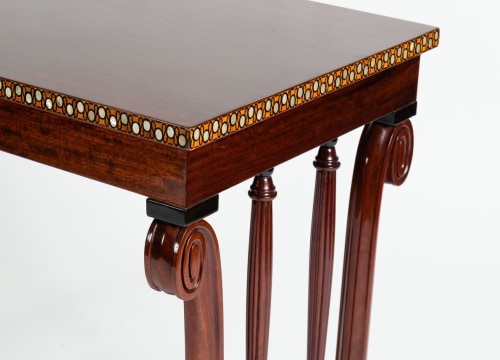
Silvered wood, upholstery.
Height: 35 - Width: 20.5 inches - Depth 19 inches
After 1910 Dufrêne’s work took on the forms of neoclassicism, and at last, an aesthetic that would coalesce into the Art Deco. While he didn’t shy from metal, ceramic, glass, or fabric, Dufrêne executed most of his designs without excessive frills or ornament—often simply, in lush woods like mahogany. A deep respect for craftsmanship is his work’s fundamental characteristic, and his furniture is as functional as it is elegant.
In 1921 the Galeries Lafayette entrusted Dufrêne with the Maîtrise workshop, which was created to compete with Guilleré’s Primavera and Follot's Pomone. His exhibit at the 1925 International Exposition of Modern Industrial and Decorative Arts in Paris helped solidify what is now considered the quintessential Art Deco style. This rare model chair for the tea room inside this pavilion. In addition to that of La Maîtrise, Dufrêne designed a few of the exposition’s luxury boutiques, a music salon, and the living room of the Ambassade Francaise pavilion. He was the artistic director of La Maîtrise from 1920 to 1941.
Published: L’Art Vivant, #18, p18. September 15, 1925.
Provenance: The Graham Gallery, London | Private Collection
Exhibited: Exposition Internationale des Arts Décoratifs et Industriels Modernes, 1925, Paris